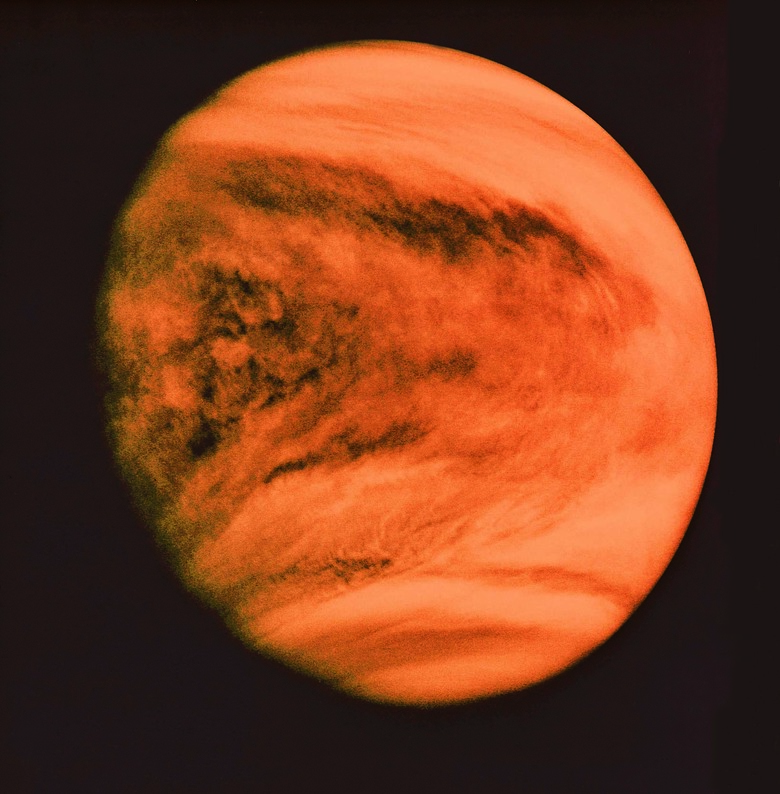How To Make A Model Of Venus For A Science Project Using A Ball
Though Venus is similar in size to Earth and orbits nearby, the planet's geography and atmosphere are evidence of a very different history than our own. Thick clouds of sulfuric acid swathe the planet, obscuring and heating the surface through the greenhouse effect. These same clouds also reflect the sun's light, making Venus one of the brightest objects in the night sky. To exhibit your knowledge of this mysterious planet, create a lightweight, detailed model as a convenient and impressive science project.
Step 1
Draw four longitudinal lines on the ball, meeting at the poles and dividing the planet into four even quarters. Draw an equator around the center of the ball, bisecting each longitude line. Your ball is now divided into eight equal pieces.
Step 2
Carefully cut out one of the eight pieces with the utility knife. Slice directly to the center of the ball, making clean, perpendicular cuts. This cutaway portion will expose the core of the planet Venus.
Step 3
Paint the exterior of the planet orange or brown. Mix colors to achieve a natural, geographic look. Paint a series of thin, intersecting yellow lines on the surface to mimic the cracks discovered by the Magellan space mission. These cracks may be evidence of extreme heating and cooling in the planet's past.
Step 4
Paint the interior portion of the planet a pale yellow-orange color. In the corner of the cutaway, paint a bright yellow circle. This should create the appearance that you have cut into the central core of the planet. Wait for your model to dry before moving on.
Step 5
Cut a piece of cotton batting to fit on roughly one hemisphere of your planet. With a glue gun, attach the top edge of the batting to the planet. This cotton represents Venus's thick clouds, which completely obscure our view of the surface. The batting can be lifted to exhibit the painted crust underneath.
Step 6
Cut out a square of cardboard slightly smaller than your planet. Glue four toothpicks to the corners so they stick up. Place the planet onto this stand with the cutaway portion facing up. For a firmer hold, gently press down so the toothpicks pierce the ball.
Things Needed
- Polystyrene foam ball
- Pencil
- Utility knife
- Paint
- Paintbrush
- Glue gun
- Cotton batting
- Toothpicks
- Cardboard
TL;DR (Too Long; Didn't Read)
Paint the stand a solid color for a more finished look.
Research Venus's geography and atmosphere so you can present your model knowledgeably to your class, teacher or audience.
Warning
When using a utility knife, apply gentle pressure and point the blade away from your body. Never cut toward yourself. Stabilize the ball from behind or in a craft clamp to avoid slippage.
References
Cite This Article
MLA
MacIntosh, Mary. "How To Make A Model Of Venus For A Science Project Using A Ball" sciencing.com, https://www.sciencing.com/make-model-venus-science-project-using-ball-12025085/. 24 April 2017.
APA
MacIntosh, Mary. (2017, April 24). How To Make A Model Of Venus For A Science Project Using A Ball. sciencing.com. Retrieved from https://www.sciencing.com/make-model-venus-science-project-using-ball-12025085/
Chicago
MacIntosh, Mary. How To Make A Model Of Venus For A Science Project Using A Ball last modified August 30, 2022. https://www.sciencing.com/make-model-venus-science-project-using-ball-12025085/
